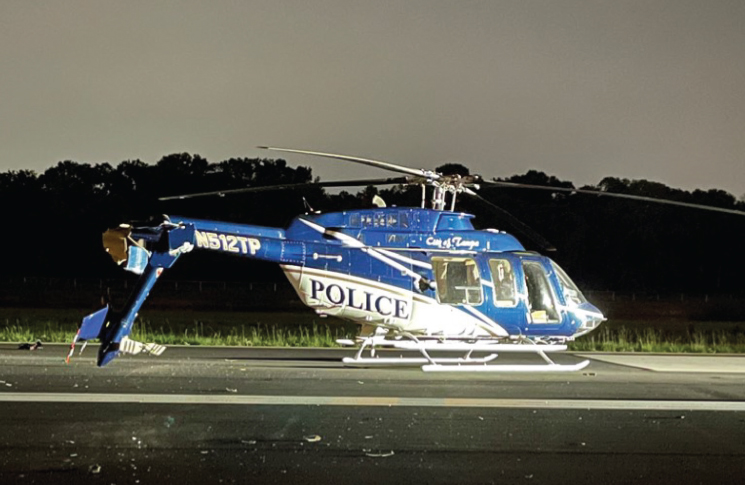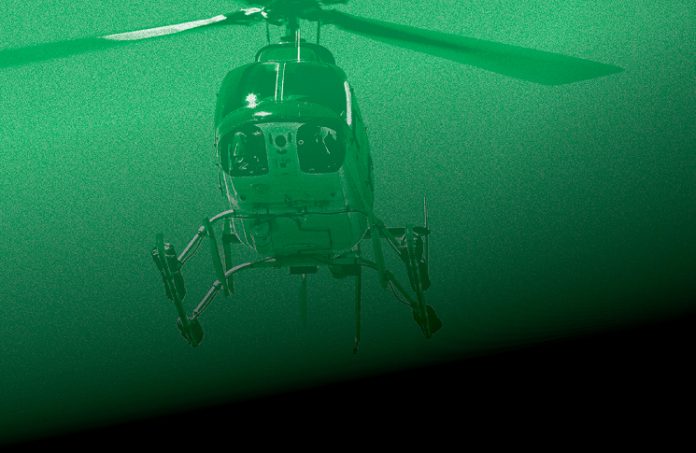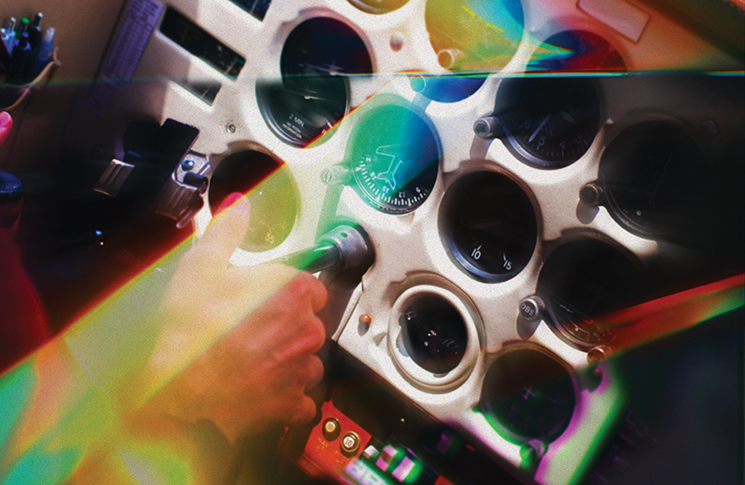Two experienced helicopter pilots, a common training exercise and a freshly paved runway. How did this combination lead to a damaged helicopter and a narrow escape from catastrophe?
By Brendan Reinhardt
In June 2021, the crew of a Bell 407 was training at Tampa Executive Airport, doing night touchdown autorotations using night-vision goggles (NVG). The aircraft was crewed by 2 experienced pilots. The pilot being assessed had conducted hundreds of NVG power-off landings to this runway but the instructor had not.
The sortie started with some general flying and manoeuvring on the runway before successfully conducting hover autorotations. So far, this was an appropriate approach where the pilots can get accustomed to the conditions and each other. Importantly, the flying instructor can gauge the pilot’s ability, how quickly to progress and how closely to monitor the other pilot’s performance.
Using an incremental approach, the next logical point to take the emergency would have been to do a power termination autorotation. Instead, the sortie progressed straight to a touchdown autorotation. The throttle was retarded to ground idle at circuit height, disconnecting the engine from the rotor transmission; the helicopter descended, flared at 90–100ft and a small amount of collective was introduced to allow the aircraft attitude to be levelled.
Touchdown to slam dunk
The pilot was applying further collective to cushion the aircraft onto the ground as the rotor RPM progressively got lower. The low-rotor horn went off and eventually the collective up stop was reached, preventing any more cushioning. The aircraft landed firmly and, with low-rotor RPM, the blades flexed excessively and struck the tail boom, cutting it off. The aircraft was shut down and luckily no one was injured.
It was also noted that the runway had been recently resurfaced and the new bitumen was darker than the previous surface. This could change the reflectivity of the runway to moon and starlight and, hence, the visual cues presented through the NVG. This was discussed by the instructor’s flying supervisor and the term ‘albedo’, the reflectivity of a surface, was mentioned.
The newly surfaced runway would have been darker than the flying pilot was used to in hundreds of previous NVG touchdown autorotations. However, normally a darker landing area results in a lower flare or hover due to a darkness illusion. Alternatively, the darker surface may have provided less optical flow or cues than the pilot had previously relied on to indicate rate of descent.
More than albedo, on reflection
To leave albedo as the only cause of the accident is a shallow analysis. A better approach may have been to use the Reason model, providing an opportunity to consider other factors as well.
Organisational Influence
The company requesting the check and the company providing it both thought there was a requirement to practice NVG touchdown autorotation. The Bell 407 is a modern single-engine helicopter fitted with a Rolls-Royce 250 engine. This gas-turbine engine has a long pedigree and, in its modern version, has a full authority digital engine control (FADEC). Given the reliability of gas-turbine engines and the likelihood of experiencing an engine failure under NVG conditions, is there a requirement to conduct NVD touchdown autorotations? If a real engine failure occurred at night and the pilot successfully made it to a landing zone where the aircraft remained upright, cut off its tail boom and everyone walked away, would that be considered a successful outcome? Would training consisting of day touchdown autorotations, NVG hover and NVG power termination autorotations be a more appropriate risk balance?
Unsafe supervision
The flying instructor started an incremental build-up with some general flying and then hover autorotations. However, the instructor then jumped straight to a touchdown autorotation. They could have built up with a power termination autorotation before the touchdown autorotation to allow an easy recovery if things went wrong. With the throttle at ground idle instead of flight idle, there was no time to wind on throttle and join the engine back to the main rotor. With the throttle at flight idle in a power termination, the instructor could have identified the flying pilot was flaring too high without risking rotor droop and a heavy landing.
Preconditions for unsafe acts The runway had been resurfaced since the flying pilot last conducted NVG autorotations and now looked different through the goggles. The albedo was different, with the runway looking darker and having different cues or optical flow.
Unsafe act active failure The flare was commenced too high or developed too much, so the helicopter was too high with insufficient rotor RPM to cushion the landing. A heavy landing resulted that caused the main rotor blades to flex and cut off the tail boom.
All too realistic
Although single-engine helicopters can do night touchdown autorotations, that doesn’t mean we should. With modern helicopter engine reliability, do you really need to do this training? Can you sufficiently train with day touchdown autorotations and night power termination autorotations.
In this case a training incident resulted in what would have been a successful outcome from a real NVG engine failure. Do we really need to elevate our night training to a level where things go bump in the night?

Modern gas-turbine engines are extremely reliable; however, practising for engine failures still needs to occur.
The airline industry now exclusively uses simulators after having learnt the hard way that there was starting to be more asymmetric training accidents than real engine failure accidents. Modern twin-engine helicopters have simulators but also have a training mode where the engine failure is artificially indicated on the displays; however, both engines are fully coupled to the rotor and full power is always available.
In a single-engine helicopter, engine failure training can be achieved by winding the throttle back to ground idle so the engine decouples from the rotor. Allowing the engine to be decoupled from the rotor and flying it to the ground is called a touchdown autorotation.
Unfortunately, it takes a finite time to advance the throttle and rejoin the engine to the rotor transmission. If you don’t rejoin the engine to the rotor, there will come a point in the flare where this cannot be achieved in time to allow engine power to drive the rotor. Any misjudgement here will result in a heavy landing.
Keeping the throttle at flight idle, lowering the collective all the way down and practising the descent and flare is called a power termination autorotation, and allows power to be applied immediately an error is detected. This autorotation is normally finished at the hover.
In a low hover, a practice engine failure – hovering autorotation – can be simulated by winding off the throttle so even if mishandled, the aircraft falling from a low hover results only in a firm landing within the undercarriage’s capacity.





